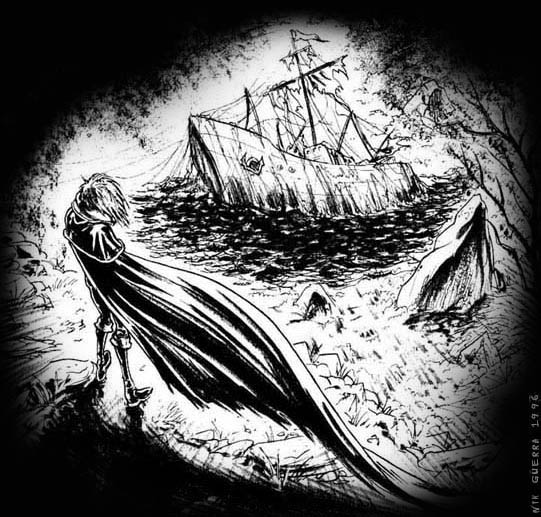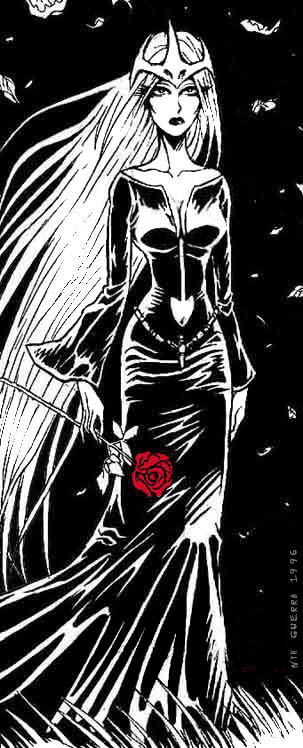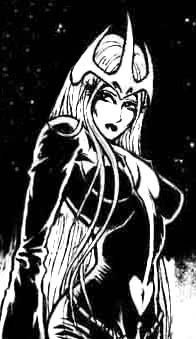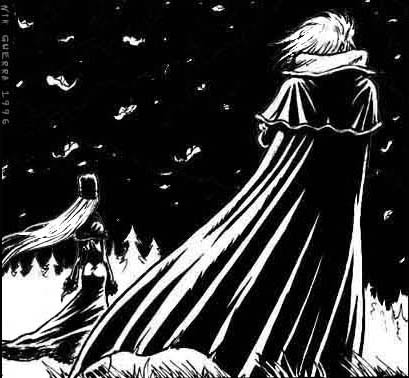

There are two physical magnitudes that regulate
life and its course: time and space.
Space is especially what associates Matsumoto's
characters in the same universe, and their lives cross and effect each
others. The only rational obstacle to these events is time, that the author
doesn't consider as a narrative obstacle at all.
It's in fact unnecessary to find in the series
that half-scientific continuity that American comics made us used to.
The first crossover try was already planned
by Matsumoto within the first series of Star Blazers, where Harlock, not
definitively characterized yet, had to show up before the meeting with
Starsha.
But the project was cut off, because only
26 of the 51 planned episodes were completed, and the story was then shortened.
Matsumoto no longer tried to mix Argo's crew with his other space characters,
certainly because Yoshinobu Nishizaki was beginning to hold the series'
reins.
In fact, Star Blazers can't be completely
held as Matsumoto's own work, in spite of the themes that are common in
his production:

|
particulary, the figure of the ethereal
woman in the heart of the story, that we'll find again, as a representation
of the Earth's salvation in Queen Millenia, as the symbol of maternity in
Galaxy Express 999, and as a most intelligent and dangerous being in Captain
Harlock. Here (in the first but especially in the second series) the contemporaneity
of characters like Harlock, Esmeralda e Tochiro is clear.
Here (in the first but especially in the second series) the contemporaneity of characters like Harlock, Esmeralda e Tochiro is clear. Only the first two of them will appear in Galaxy Express 999 that will be considered as the last series chronologically (and therefore poor Tochiro has died already). Esmeralda and Harlock are legends already in the episodes where they appear, and their appearing is already "lived" physically. But watch out, because Testsuro leaves by the Galaxy Express towards Andromeda in 2221, whereas Harlock lives in 2977; as matter stands, we have to ignore dates! Even the film from 1979 (Galaxy Express 999-The Movie) contradicts the series itself, but it has to be hald as a different case altogether. The whole movie is a true concentrate of the Galaxy's theme: it celebrates a boy's goodbye to his youth. In the course of one night he seems to go through all those emotions that he dreamed on the way towards maturity, emotions that disappear little by little as he gets nearer his destination. How could we accept his presence as a fundamental cause of the "birth", of the soul, of the Arcadia otherwise? |
This film's sequel (Adieu Galaxy Express 999),
a part from its typically great atmospheres, is only a forced and illogical
continuation of a story that had no reasons to go on. anyhow, it reveals
another link to the entire saga, i.e. Maeter originally came from planet
Lamethal, just like Queen Millenia. Curiosly, the latter also got the original
Lamethalian name of Andromeda Promethium, partially identical to that of
Maeter's mother, Queen Promethium, whose first name Andromeda is also the
name of her mechanical planet.
We are then left with the suspicion that
Yayoi-Andromeda Promethium, after having sacrificed herself by sinking
in the black hole of Lamethal's orbit, might not be dead but just passed
to another life, going mad and devoting herself to the humanity mechanization.
But this is just a deduction of mine.
One can find another little quotation of
a common universe in the beginning of the first episode of SSX (Harlock's
second series), where apart from Harlock, Tochiro and Esmeralda, even Maeter
is considered as a dangerous wanted person (her code is X00999) by the
Illumidas troops.


Towards the end of the 90's, Matsumoto revives
the Galaxy Express manga, creating one umpteenth (and a bit useless) chapter
of the saga. This event is obviously connected to a new wave of productions
that have the author's space characters as heroes.
The fact that Yamato's crew eventually appears
next to Maeter, Harlock & C., is principally due to the contractual
victories over the "enemy" Nishizaki.
N.G.